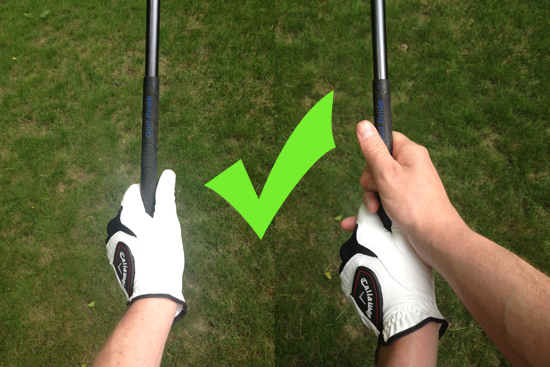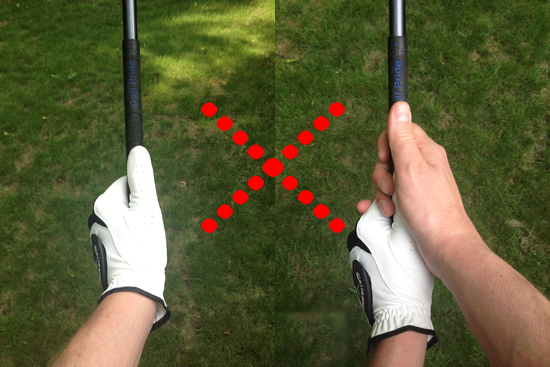This is a guest post by Scott McCormick. Scott writes for Golf Now Charlotte about the best courses to play in North Carolina.
Golf is a sport that poses a unique challenge to those that play. Golf requires not only physical adequacy, but mental consistency and restraint during times of frustration. There’s a reason that golf is becoming a world game. People can play well into their late years, and it’s also a sport that is nearly impossible to master. It’s an endless challenge, and people love that. However, it’s incredibly demanding. Even professionals hit wayward shots at least every other round, and golf’s general difficultly leads to overall intrigue around the sport.
One place that people struggle within their golf game involves consistency, both mental and physical. A golfer’s actual technique needs to be steady as he or she progresses through a round. Similarly, the player’s mindset needs to be level headed. Any legitimate lack in either area is detrimental to success on the links, and most everyone that has played the sport understands this.
Below are straight forward tips for creating stability on the course. If you’re a golfer that feels the ups and downs, to the point of frustration and errant shots, you need to take initiative and attack the problem head on. From there, you’ll drop strokes and become better friends with your score card.
Mental Stability
While most sports have a mental component to them, golf is even more so and many golfers at all levels struggle keeping a level mindset. For one, a bad shot shouldn’t affect the next. If you’re aiming to have a low handicap and a scorecard that’s easy on the eyes, you need to have mental stability each time you line up for a shot.
It’s difficult to maintain composure and confidence within golf. For one, a bad stroke can easily snowball and lead to another one. However, this doesn’t have to happen and many players could greatly benefit simply by thinking twice about it.
Some quick tips to maintain mental stability, and thus improve your game:
- Understand that one poor shot doesn’t need to affect your mindset. Just because you sliced your drive on the opening tee box, it doesn’t mean that you’re behind the eight ball for the rest of the day. As a golfer, you can really benefit from looking at each shot individually. The game is already difficult, and overanalyzing each errant shot isn’t going to do any good.
- Be confident in your game. Regardless of the level you play at, keep your focus on what you know you can do. If you’ve done it before, you can do it again.
- Take your time and don’t feel rushed. This doesn’t mean delaying the group behind you on each and every shot, but it does mean that you will not succeed in golf if you constantly feel pressure to quickly hit your shot. Hitting a tiny white ball accurately is already hard enough, and becomes extremely challenging if you’re in a hurry. Give yourself a break and take your time. Play at a pace that allows you to maintain proper technique and appropriate mindset.
Part of finding consistency on the golf course is reeling in emotion. Looking at each shot individually, staying confident in your skillset and taking adequate time on every stroke can improve your game in serious ways.
Physical Regularity
Yes, golf is largely mental, but that doesn’t mean that physical shortcomings can’t tarnish a score card. Technique and style, and particularly consistent performance in these areas, are huge components of success on the links. Unique to other sports, golf requires a level of exactness not seen in another game. The distance, trajectory and accuracy of a golf shot will only be on point if the golfer is firing on all fundamental cylinders.
While each golfer is different, there are near-universal ways to improve the way you approach and execute each shot. It can be hard to maintain technique and fundamentals through a long round, but the more you do so, the better off you’ll be.
Some quick tips to ensure proper technique:
- Don’t underestimate fitness when it comes to golf. Sometimes viewed as a sedentary sport, this couldn’t be further from the truth. For one, a lack in fitness can be very detrimental to a golfer’s performance, particularly at the end of rounds. For example, if a golfer’s legs get tired, their stance loosens and their swing is affected. Similarly, when the hands or lower back feel the burn, golfers tend to pull up on swing impact or change grip mid-round.
- Keep your head down. A golfer will have a hard time finding success if they consistently lift their head through their stroke. For one, it’s impossible to focus on the golf ball if your head is pulling up through impact. Secondly, the motion of lifting your head affects your arms, core and stance. These components cannot be adjusted mid-stroke if an accurate shot is desired. It starts and ends with keeping your head down, and you can’t be reminded of this enough.
- Develop a fundamental swing. Whether you have to take lessons from your local professional or not, your swing needs to have right components to help you reach success. A golfer’s potential is determined by his or her mental and physical stability. Your swing needs to be part of your golf routine, with each stroke mirroring the next and the previous. The more regular you feel within your technique, the better you can gauge club selection and shot power.
You simply can’t afford to have ups and downs in your physical technique. The same (and hopefully fundamental) steps and procedure should be executed each time you line up for a shot. From there, you’ll find more regularity as your push forward.
Golf, like most other sports, is based on mental and physical capacity. However, the focus needs to be more detailed in this game. The slightest miscue can lead to an errant shot. While each golfer is different, these ideas should help take your game to a new level.






